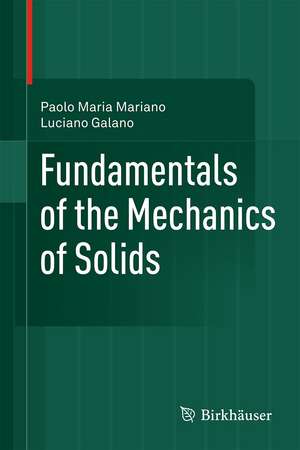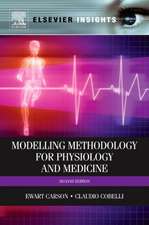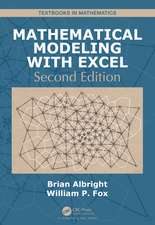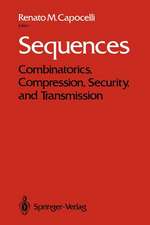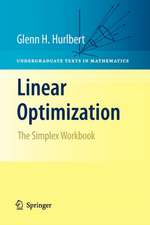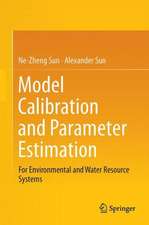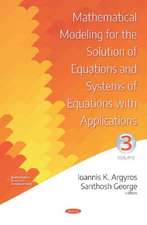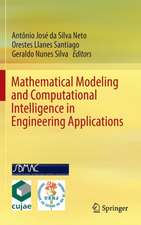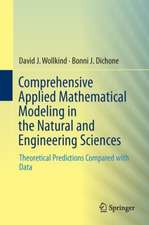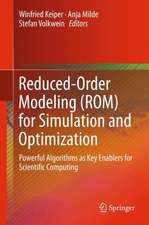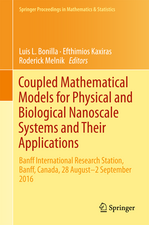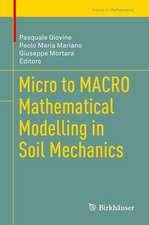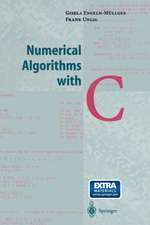Fundamentals of the Mechanics of Solids
Autor Paolo Maria Mariano, Luciano Galanoen Limba Engleză Hardback – dec 2015
The text begins with the definition of bodies and deformations, keeping the kinematics of rigid bodies as a special case; the authors also distinguish between material and spatial metrics, defining each one in the pertinent space. Subsequent chapters cover observers and classes of possible changes; forces, torques, and related balances, which are derived from the invariance under classical changes in observers of the power of the external actions over a body, rather than postulated a priori; constitutive structures; variational principles in linear elasticity; the de Saint-Venant problem; yield criteria and a discussion of their role in the representation of material behavior; and an overview of some bifurcation phenomena, focusing on the Euler rod. An appendix on tensor algebra and tensor calculus is included for readers who need a brief refresher on these topics.
Fundamentals of the Mechanics of Solids is primarily intended for graduate and advanced undergraduate students in various fields of engineering and applied mathematics. Prerequisites include basic courses in calculus, mathematical analysis, and classical mechanics.
| Toate formatele și edițiile | Preț | Express |
|---|---|---|
| Paperback (1) | 396.78 lei 6-8 săpt. | |
| Springer – 22 aug 2016 | 396.78 lei 6-8 săpt. | |
| Hardback (1) | 484.77 lei 6-8 săpt. | |
| Springer – dec 2015 | 484.77 lei 6-8 săpt. |
Preț: 484.77 lei
Preț vechi: 570.32 lei
-15% Nou
Puncte Express: 727
Preț estimativ în valută:
92.76€ • 97.11$ • 76.75£
92.76€ • 97.11$ • 76.75£
Carte tipărită la comandă
Livrare economică 05-19 aprilie
Preluare comenzi: 021 569.72.76
Specificații
ISBN-13: 9781493931323
ISBN-10: 1493931326
Pagini: 422
Ilustrații: XXIII, 422 p.
Dimensiuni: 155 x 235 x 32 mm
Greutate: 0.8 kg
Ediția:1st ed. 2015
Editura: Springer
Colecția Birkhäuser
Locul publicării:New York, NY, United States
ISBN-10: 1493931326
Pagini: 422
Ilustrații: XXIII, 422 p.
Dimensiuni: 155 x 235 x 32 mm
Greutate: 0.8 kg
Ediția:1st ed. 2015
Editura: Springer
Colecția Birkhäuser
Locul publicării:New York, NY, United States
Public țintă
GraduateCuprins
Preface.- Bodies, Deformations, and Strain Measures.- Observers.- Forces, Torques, Balances.- Constitutive Structures.- Basic Aspects.- Topics in Linear Elasticity.- The de Saint-Venant Problem.- Critical Conditions: Yield Criteria.- Rod Models.- The Euler's Analysis of Critical Loads: Bifurcation Phenomena.- Appendix: Tensor Algebra and Tensor Calculus.- Suggestions for Further Reading.- Index.
Recenzii
“It provides an excellent introduction to the fundamentals of mechanics of continua on the basis of applied mechanics. … The book is aimed at students and teaching staff as well as practicing civil and structural engineers. Its purpose is to handle new models, and new mechanical theories. Various applications, examples and also a number of exercises for the reader to solve independently helps to achieve this aim of the book.” (Stan Chirita, zbMATH 1334.74001, 2016)
Notă biografică
Prof. Dr. Paolo Maria Mariano teaches Mechanics of Solids and Theoretical Mechanics in the School of Engineering at the University of Florence. He is also coordinator of the Research Group in Theoretical Mechanics of the Mathematics Research Center “E. De Giorgi” of the Scuola Normale Superiore in Pisa. His research interests cover continuum mechanics of simple and complex materials, thermodynamics, applied calculus of variations, and applied differential geometry.
Prof. Dr. Luciano Galano is a senior researcher in the School of Engineering at the University of Florence, where he teaches Mechanics of Masonry. His research interests cover the mechanics of masonry structures, the dynamics of structures subjected to earthquakes, the mechanics of concrete, and computational mechanics.
Prof. Dr. Luciano Galano is a senior researcher in the School of Engineering at the University of Florence, where he teaches Mechanics of Masonry. His research interests cover the mechanics of masonry structures, the dynamics of structures subjected to earthquakes, the mechanics of concrete, and computational mechanics.
Textul de pe ultima copertă
This distinctive textbook aims to introduce readers to the basic structures of the mechanics of deformable bodies, with a special emphasis on the description of the elastic behavior of simple materials and structures composed by elastic beams. The authors take a deductive rather than inductive approach and start from a few first, foundational principles. A wide selection of exercises, many with hints and solutions, are provided throughout and organized in a way that will allow readers to form a link between abstract mathematical concepts and real-world applications.
The text begins with the definition of bodies and deformations, keeping the kinematics of rigid bodies as a special case; the authors also distinguish between material and spatial metrics, defining each one in the pertinent space. Subsequent chapters cover observers and classes of possible changes; forces, torques, and related balances, which are derived from the invariance under classical changes in observers of the power of the external actions over a body, rather than postulated a priori; constitutive structures; variational principles in linear elasticity; the de Saint-Venant problem; yield criteria and a discussion of their role in the representation of material behavior; and an overview of some bifurcation phenomena, focusing on the Euler rod. An appendix on tensor algebra and tensor calculus is included for readers who need a brief refresher on these topics.
Fundamentals of the Mechanics of Solids is primarily intended for graduate and advanced undergraduate students in various fields of engineering and applied mathematics. Prerequisites include basic courses in calculus, mathematical analysis, and classical mechanics.
The text begins with the definition of bodies and deformations, keeping the kinematics of rigid bodies as a special case; the authors also distinguish between material and spatial metrics, defining each one in the pertinent space. Subsequent chapters cover observers and classes of possible changes; forces, torques, and related balances, which are derived from the invariance under classical changes in observers of the power of the external actions over a body, rather than postulated a priori; constitutive structures; variational principles in linear elasticity; the de Saint-Venant problem; yield criteria and a discussion of their role in the representation of material behavior; and an overview of some bifurcation phenomena, focusing on the Euler rod. An appendix on tensor algebra and tensor calculus is included for readers who need a brief refresher on these topics.
Fundamentals of the Mechanics of Solids is primarily intended for graduate and advanced undergraduate students in various fields of engineering and applied mathematics. Prerequisites include basic courses in calculus, mathematical analysis, and classical mechanics.
Caracteristici
Based on the authors’ many years of experience teaching courses on the mechanics of solids and what they found to work best for students Takes a deductive rather than inductive approach and starts from a few first, foundational principles Exercises organized in a way that will allow students to form a link between abstract mathematical concepts and real-world applications
